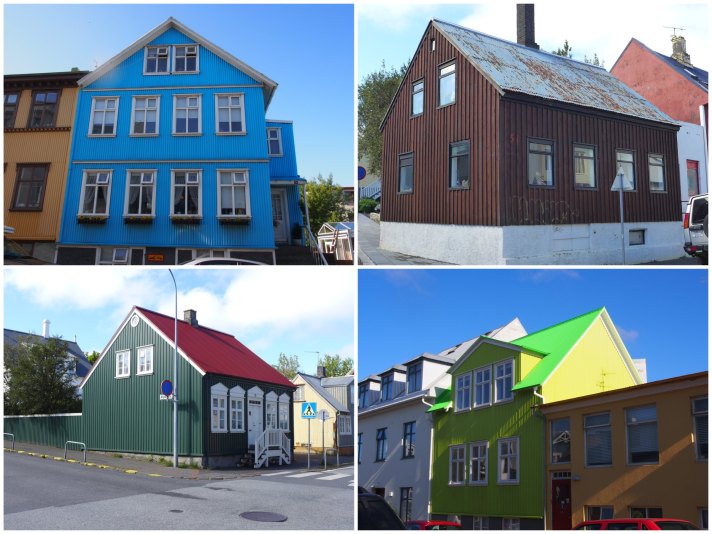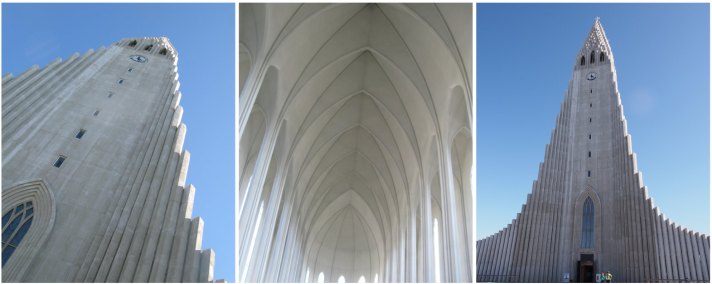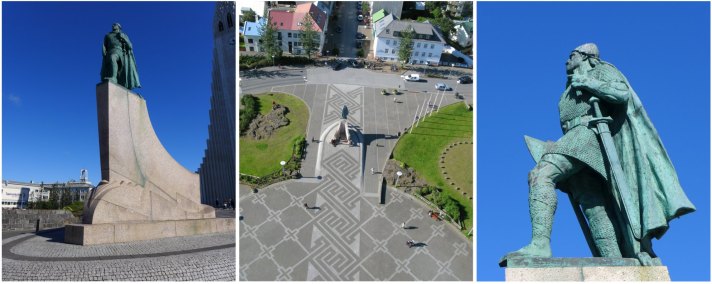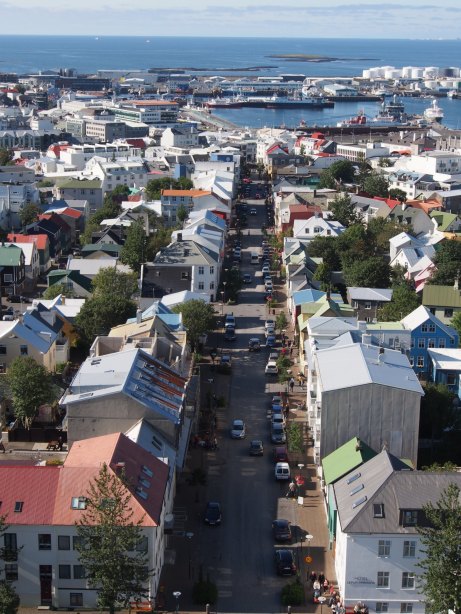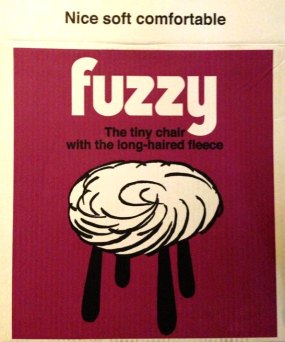Tourism in Iceland has more than doubled since 2000, with 672,900 visitors in 2012 – nearly half of them visiting in the summer months. It doesn’t seem like a lot, but Reykjavik is a small place.
Reykjavik itself is extremely walkable. Downtown is situated on the slope of a hill with the cathedral at the top, and the harbour on the bottom. Houses are often very colourful, and made predominantly of corrugated iron – it arrived in the 1860’s to a place with limited construction materials (imported from England). It was extensively used in reconstruction after the fire of 1915, when construction of wooden houses was prohibited in the city centre. Also, considering the place has volcanoes that spew ash, building houses out of metal is probably not a bad idea. Corrugated iron is low cost, low maintenance, and can be painted in vivid colours, as is common in Reykjavik. Does make me wonder why we don’t use more of this stuff in Canada – would make sense, especially for roofs (which you do see in country areas, just not in the city). Actually, I don’t know how woodworkers survive in Iceland. Yes there are trees, and occasionally even small forests, but not enough to build houses out of. But it’s not the climate that causes the treeless landscape – when Iceland was settled over 1100 years ago, birch forest covered 25-40% of the land. Wood was used as a fuel, and for making charcoal up until the 1940s. Increases in sheep numbers actually helped prevent forests expanding. Today forest covers 1.5% of Iceland (just if you’re wondering).
Piercing the sky like a square-blade awl, the most prominent architectural feature in Reykjavik (apart from the new Harpa concert hall on the harbour) is the Hallgrímskirkja – Church of Hallgrímur. Designed by Guðjón Samúelsson, Iceland’s state architect (1920-1950) work started in 1945, and the church was finally consecrated in 1986. The neo-Gothic concrete gargantuan spire is 73 metres high and the step-like form of the braces that run up the corners of the tower mimic the volcanic basalt formations found in Iceland. The interior is extremely austere, but maybe that’s what places of worship should be like. You can take an elevator up to the observation deck, which provides the best vantage point for viewing the entire city (admission to the tower is kr. 700).
Iceland was settled in AD 874. In the front of the church is a statue of Norse explorer Leif Eriksson (circa 970-1020AD) who was born in Iceland and may have been the first European to reach North America (what the Norse called Vinland), circa 1000 AD. There he established a small settlement Leifsbudir – believed to be L’Anse aux Meadows in Newfoundland. The statue was made by A. Stirling Calder, and was a gift from the U.S.A. to commemorate the 1000th anniversary of the Althing, the Icelandic Parliament in 1930.
Walking down the hill through the shopping district, you eventually get to the harbour.
Reykjavik itself is quaint, cozy almost. There are a lot of souvenir-type stores, selling lots of Icelandic woollen sweaters… *lots* of them. I’m not a wool person, but I found the wool scratchy. The majority of them are “Made in Iceland”, which is nice. You’ll also find a lot of outdoor-type clothes with labels such as “Designed in Iceland”, meaning exactly that – made somewhere else. I understand fully the complexities of manufacturing outdoor clothing in a country with a population of a little over 300,000, but when you’re paying upwards of $400 for an outwear jacket, it would be nice to think it could be made locally. 66° North has some nice outdoor clothing, just too pricey. We bought some locally made mitts and hats made by Varma. Other outdoor clothing makers include Cintamani and Icewear. Other Icelandic things to bring home? Reindeer hides, which I can’t say were from Iceland, and sheepskins. In Canada, a good source of both of these is Black Sheep (White Light). There are lots of sheep in Iceland – they outnumber people 1.5 to 1… just in case you’re wondering. We did buy some glerups woollen slippers (from Denmark), then realized when we got home that you can get them in Canada.
We bought a neat woollen stool. Created in 1972 by Sigurdur Mar Helgason, these handcrafted “fuzzy” chairs have four wooden legs and are covered in an Icelandic long-haired sheep fleece. If you’re looking for a good place to buy products from local designer, try Kraum – situated in oldest house in Reykjavik (1762) down near the harbour. Looking for a guide to Icelandic designers? – try the Icelandic Design Centre.

Kraum (Icelandic Times)
